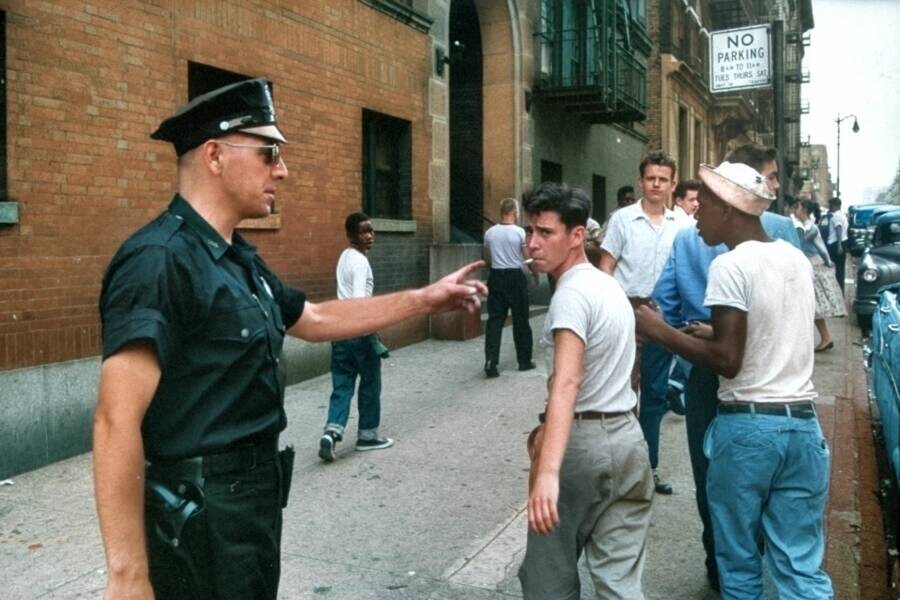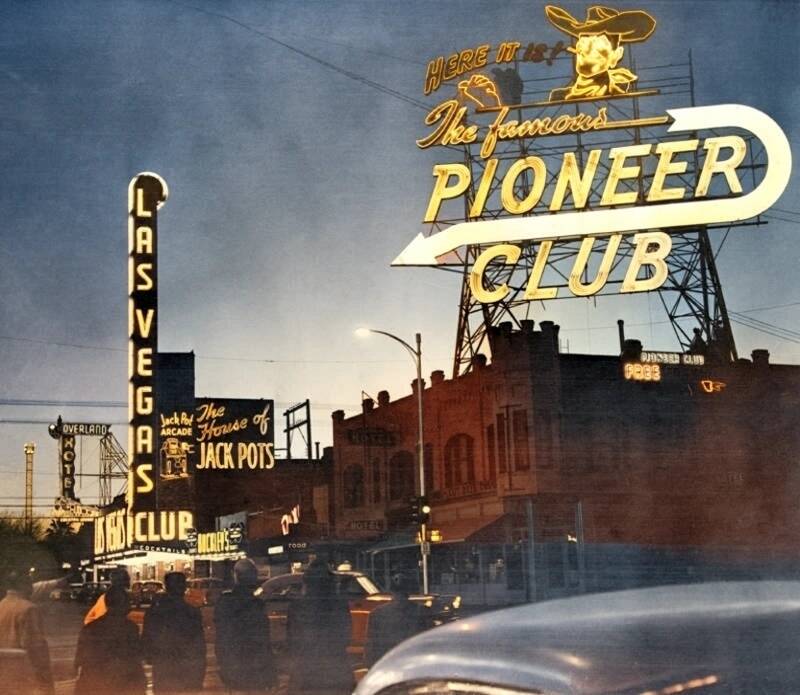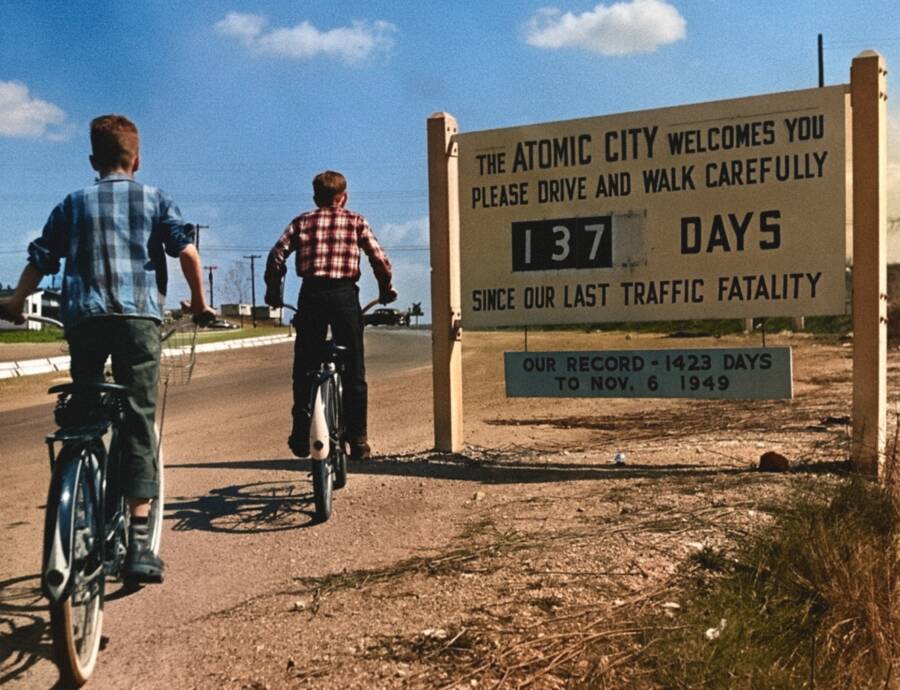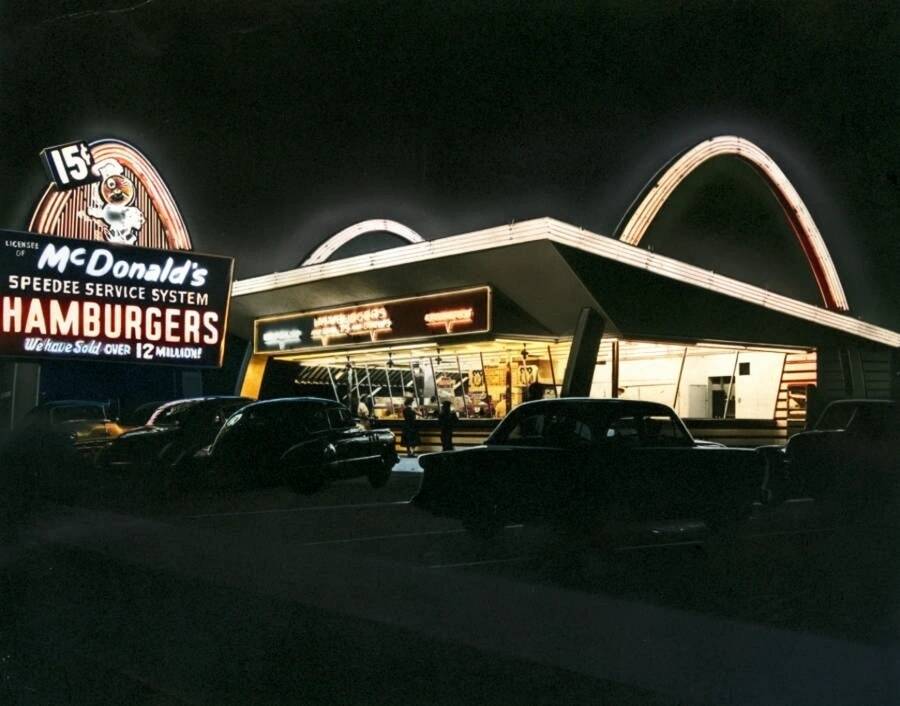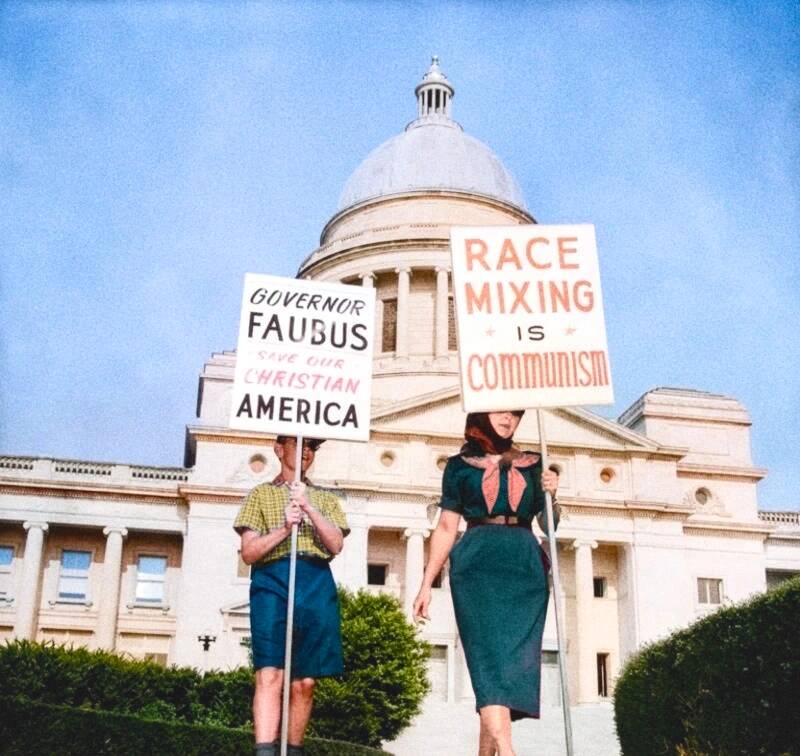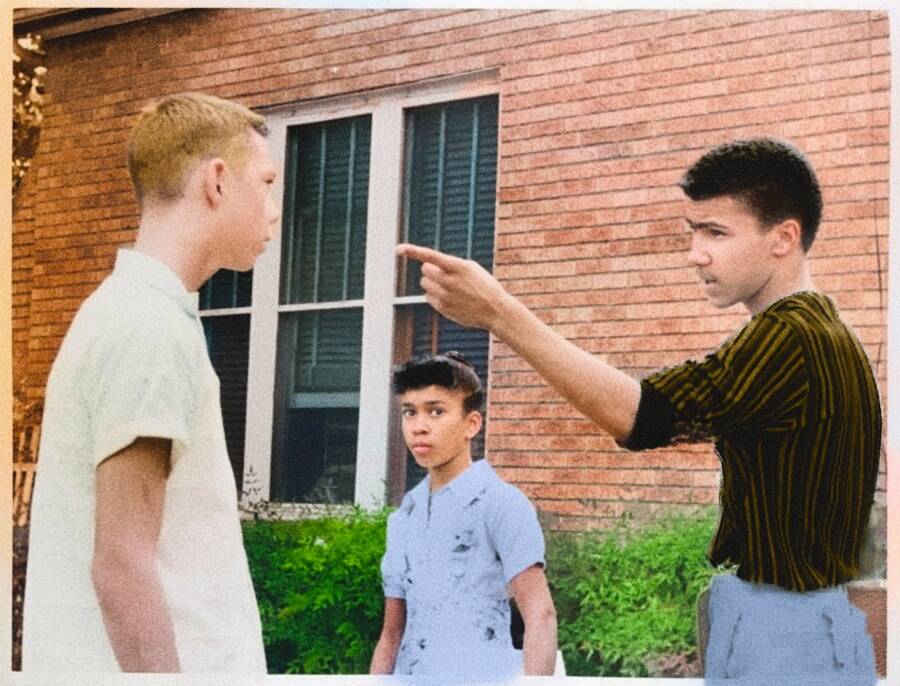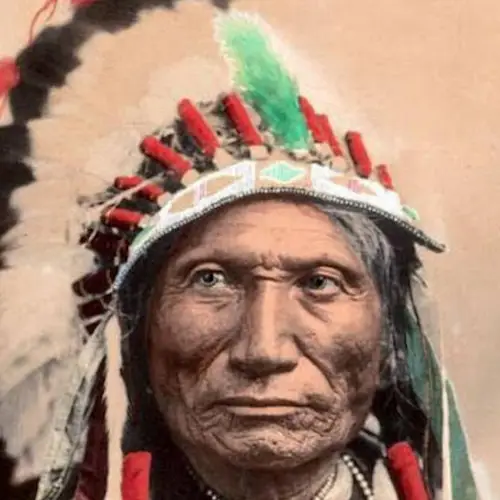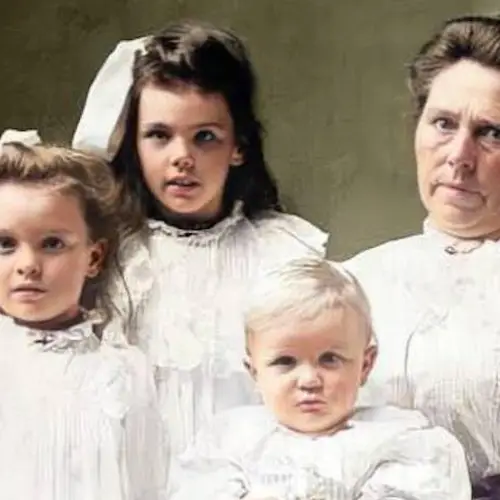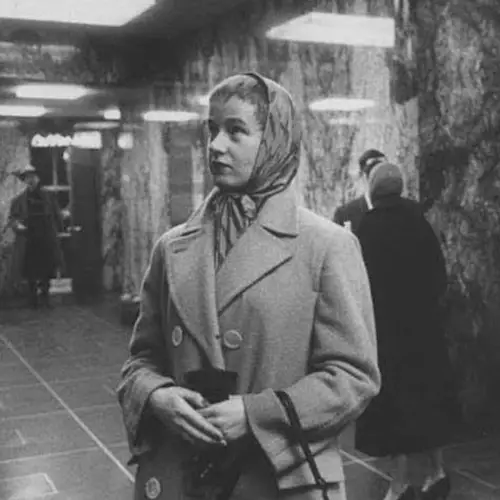From malt shops and jukeboxes to the early civil rights movement and the atomic age, take a trip back in time with these colorized photos from the 1950s.
After World War II, a new status quo emerged. The United States and the Soviet Union rose up as two of the most powerful nations on Earth culturally, economically, and militarily. But despite their cooperation during the war, the two nations’ ideals were quite different.
Even though some in America had once attempted to isolate the country from global affairs, there was no denying that the country was now at the forefront of global politics. But as the United States tried to exert its influence on the rest of the world, so too did the Soviet Union.
This period marked the beginning of the Cold War, but it was also a time of great change pushed forward by incredible economic growth. The 1950s saw the emergence of suburban living, the rise of rock ‘n’ roll, and the beginnings of great movements that would change society forever.
This all happened before color photography was common, meaning most pictures from this era were captured in black and white. Luckily, we’ve put together a gallery of colorized images that show the 1950s as they truly were.
Politics, International Relations, And War
The 1950s were partly defined by the geopolitical tension between the United States and the Soviet Union — better known as the Cold War. The Cold War, and American concerns over the rise of communism and its influence, served as a basis for various domestic and foreign policies enacted by the U.S., leading to McCarthyism and the Red Scare.
Of course, the Cold War lacked actual battles, mostly focusing on spying, subterfuge, and influence in place of weapons and bloodshed. But the Cold War was not the only war that took place during the 1950s.
The decade began with the Korean War (1950–1953), when North Korean forces, aided by China and the Soviet Union, invaded South Korea. The United States, under the banner of the United Nations, intervened to support South Korea, eventually leading to a bloody stalemate that ended with an armistice in 1953. This left the Korean Peninsula still divided along the 38th parallel — a division that causes conflict to this very day.
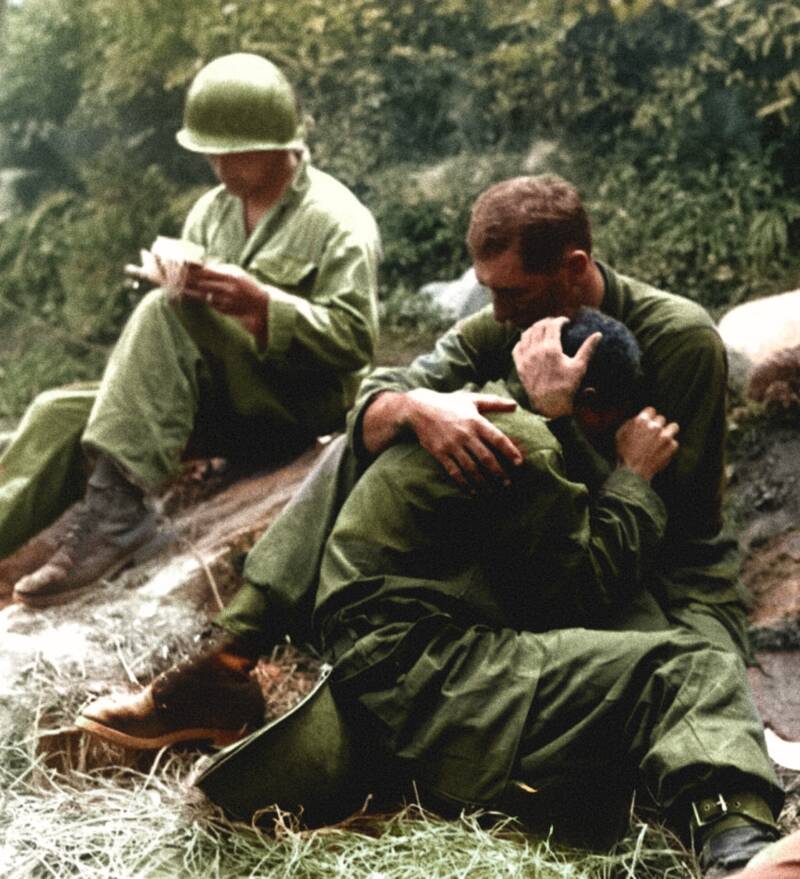
Public DomainSoldiers embracing during the Korean War.
Meanwhile, in the Middle East, the United States sought to curb Soviet influence through strategic alliances and interventions.
The Eisenhower Doctrine, announced in 1957, pledged U.S. economic and military assistance to any Middle Eastern country resisting communist aggression. This policy was a response to the power vacuum left by the decline of British and French influence in the region after the Suez Crisis of 1956, when Egypt nationalized the Suez Canal Company, prompting military mobilization from Britain, France, and Israel. The U.S., aiming to prevent Soviet expansion and maintain stability, pressured its allies to withdraw, marking a significant moment in Cold War diplomacy.
The era also saw the phenomenon termed "Pactomania," characterized by the U.S. forming numerous alliances and treaties with the goal of containing communism. Notable among these were the North Atlantic Treaty Organization (NATO), the Southeast Asia Treaty Organization (SEATO), and bilateral commitments to nations like Japan, South Korea, and the Philippines. These alliances ultimately aimed to create a network of anti-communist states encircling the Soviet Union and China.
A "Golden Age" Of Pop Culture, Movies, Entertainment, And Sports
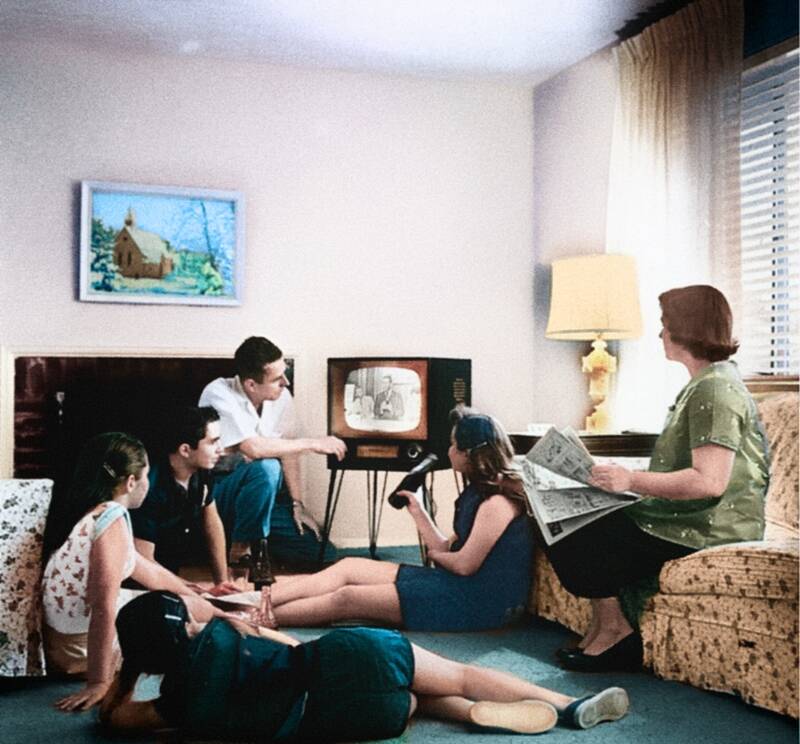
Public DomainA family gathered around to watch television.
The postwar economic boom back home, on the other hand, led to what many considered a golden age for American pop culture. As the U.S. emerged from World War II as one of the world's most powerful nations, a newfound optimism could be seen in movies, music, and sports.
Throughout the decade, artists like Elvis Presley, Chuck Berry, and Little Richard brought an exciting sound known as rock 'n' roll to the masses, blending rhythm and blues with country music, energetic performances, and rebellious lyrics that resonated with the youth and symbolized a break from traditional norms. It was a distinctly American sound, though of course there was also significant pushback from older generations who felt the music was perhaps too rebellious and sexually charged for their liking.
The Golden Age of Hollywood also flourished during this decade, producing iconic films that have stood the test of time.
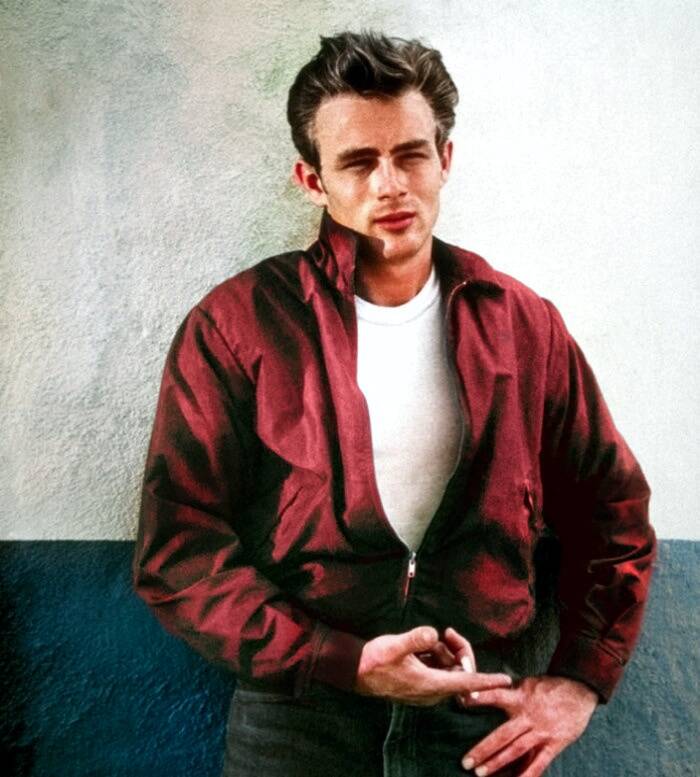
Public DomainActor James Dean in his iconic jacket.
Movies like Rebel Without a Cause (1955), starring James Dean, captured the restlessness of the younger generation, while musicals like Singin' in the Rain (1952) established themselves as timeless classics. Epics like Ben-Hur (1959), on the other hand, showed just how far "movie magic" had come.
It wasn't just film, either. Television also became a household staple, with shows like I Love Lucy and The Twilight Zone becoming cultural touchstones.
American sports also saw a major boom during the '50s. Baseball remained America's pastime, with legends like Mickey Mantle and Willie Mays captivating fans. The decade also saw the integration of Major League Baseball, as Jackie Robinson broke the "color line" in 1947, paving the way for more Black American players to emerge in the '50s. Meanwhile, boxing saw the rise of major figures like Rocky Marciano and Sugar Ray Robinson.
But underneath the glitz and glamour of American pop culture was a much less pleasant reality. Segregation and racial discrimination were rampant, and fears of communism and the Soviets had started to creep into more than just foreign policy. One senator in particular kickstarted a movement that would have sweeping effects across the U.S.: Joseph McCarthy.
Segregation, McCarthyism, And Rising Tension
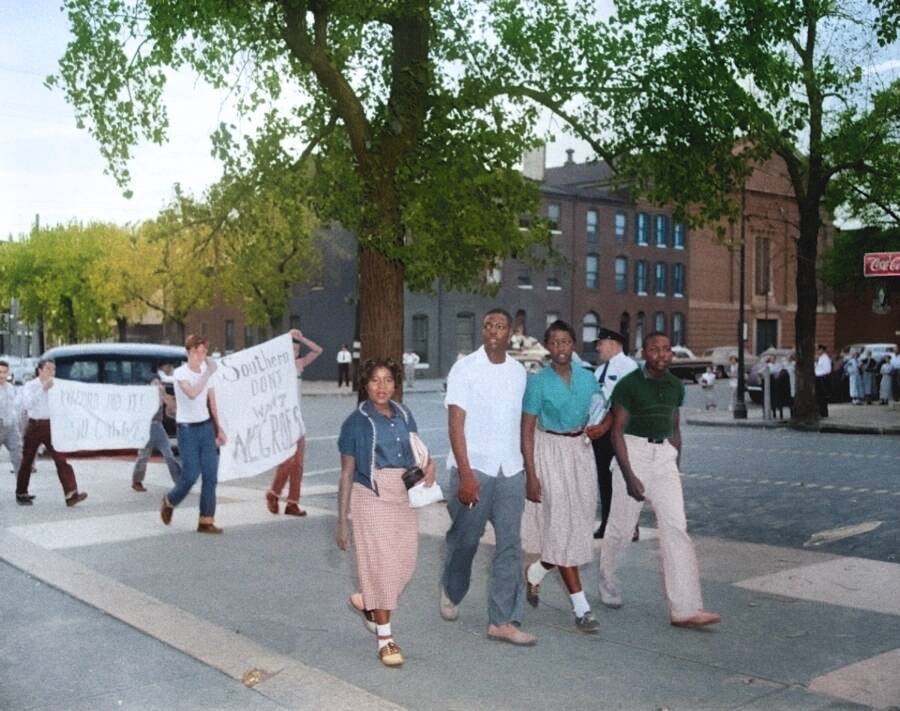
Bettmann/Getty ImagesAnti-civil rights protesters following Black students to school, demanding that they remain in separate facilities.
Domestically, the 1950s were a period of both conformity to the status quo and dissent. The postwar economic boom led to the rise of suburban communities, with families seeking the idealized American Dream — a house with a white picket fence, a neighborhood that was safe for their children, and a comfortable life supported by a single income.
However, beneath this veneer of prosperity lay significant social tensions.
Racial segregation was rampant, particularly in the South, where Jim Crow laws enforced the separation of Black and white Americans.
In response, the civil rights movement began to gain momentum during the 1950s. Landmark events, such as the Brown v. Board of Education case, in which the U.S. Supreme Court declared racial segregation in public schools unconstitutional in 1954, challenged the status quo and ignited a push for further civil rights reforms. The Montgomery bus boycott, sparked by Rosa Parks' famous refusal to give up her seat to a white passenger, also became a pivotal moment in the ongoing fight against racial injustice.
Around the same time, the fear of communism permeated American society, resulting in what is now known as McCarthyism and the Red Scare.
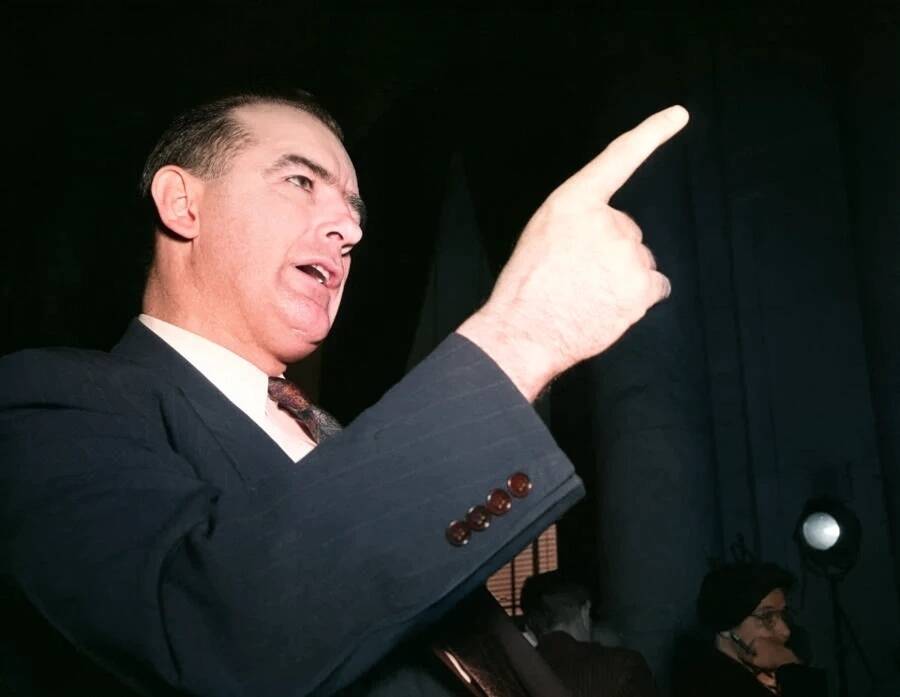
Bettmann/Getty ImagesU.S. Senator Joseph McCarthy stoked fears of supposed communist infiltration in America.
U.S. Senator Joseph McCarthy of Wisconsin spearheaded a campaign alleging widespread communist infiltration in the U.S. government and other institutions, which led to aggressive investigations, often based on scant evidence, resulting in ruined careers and sometimes even lives. Americans were warned that communists were lurking around every corner, and some turned on their neighbors at the slightest sign of communist ideology.
The entertainment industry was notably affected, with a Hollywood blacklist preventing accused individuals from working in the industry. Ultimately, McCarthy's claims were overblown, and he would eventually be formally censured for his behavior. But it does show just how widespread the concerns over communists and the Soviets were during that time period.
Still, it would be an understatement to simply say the 1950s were a pivotal period in American history. The influences of social revolution, pop culture, and even McCarthyism can still be felt to this day in the United States.
After looking through these colorized 1950s photos, check out colorized World War II photos. Then, explore the Roaring Twenties in stunning color.
